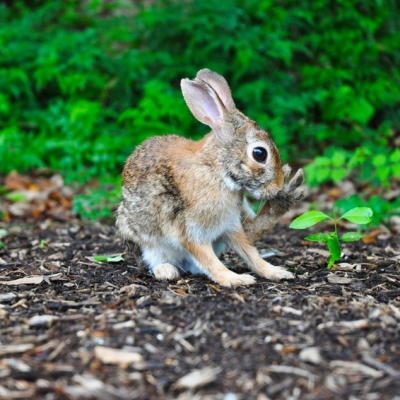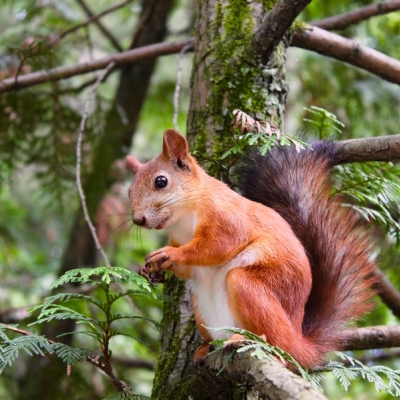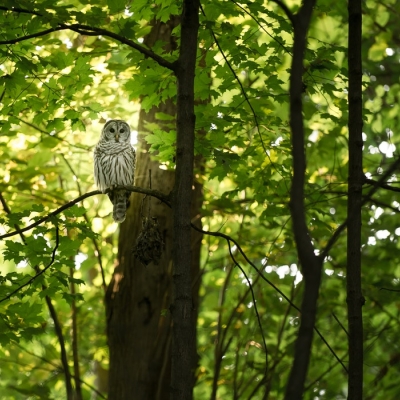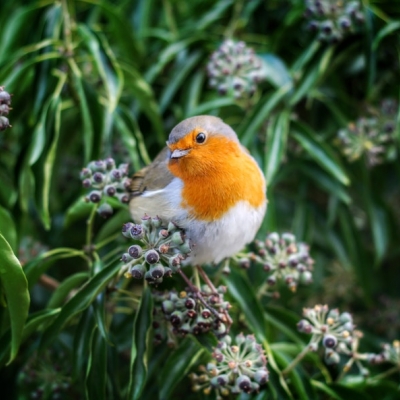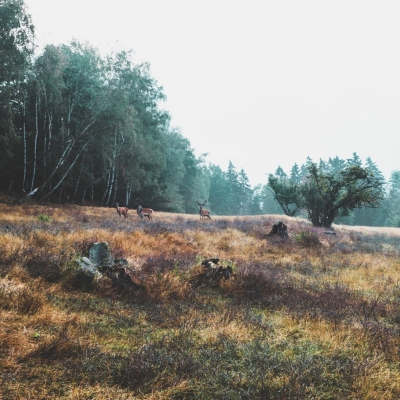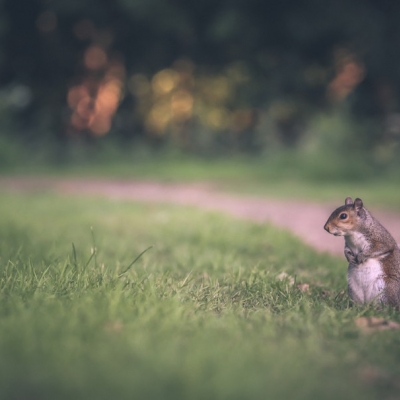
Working in forestry for many years, I've had the honor of learning from Indigenous people about their profound ties to the land and the knowledge they possess about maintaining our forests.
Rooted in their cultural customs and relationship to the land, indigenous communities all over the world have long understood forest stewardship in great depth. In the current environmental conservation efforts, this information is priceless because it provides a comprehensive and long-term method of forest management that goes beyond resource collection.
Native Americans have coexisted peacefully with the natural world for ages, understanding how closely the health of the forests affects their own survival. Their methods, which guarantee that resources are used carefully and replenished for next generations, are frequently founded on the ideas of reciprocity and respect for the natural world.
The idea of interdependence—the understanding that every component of an ecosystem is dependent on and interwoven with every other—is a fundamental component of Indigenous forest management. Indigenous communities therefore take into account not only the trees themselves but also the plants that grow beneath them, the animals that depend on those trees for habitat, and the water supplies that support life when managing a forest.
Native American knowledge also recognizes the spiritual value of the land, seeing forests as hallowed places with cultural significance and history rather than merely a collection of resources. From this angle, one feels more obligated to protect the environment and maintain its integrity for coming generations.
Ecosystems can become more robust and sustainable when Indigenous knowledge is included into contemporary forest management techniques. Through the knowledge and customs of these communities, we may advance toward a more peaceful coexistence with the natural world that is advantageous to humanity and the environment at large.
The Reciprocity Concept
Reciprocity is one important lesson Indigenous forest stewardship can teach us. Many Indigenous societies consider themselves as custodians charged with preserving a fragile equilibrium in the ecosystem, rather than as something to be subjugated or used for profit. This kind of thinking pushes us to return to the planet as much as we take, so that next generations can keep enjoying the wealth of our natural resources.
Working along with Indigenous forestry specialists has allowed me to see directly their deep respect for the interdependence of all living things. This viewpoint forces us to reconsider how we manage forests and think about how our choices now will affect the environment worldwide as well as our immediate surrounds.
How therefore might we assist Indigenous forest management? One approach is to raise their voices and support laws that give working with Indigenous communities first priority during land management decision-making. Our forests can be protected with more efficient and long-lasting methods if we recognize and include traditional knowledge into contemporary conservation initiatives.
Accepting Indigenous viewpoints on forest management means respecting many ways of knowing and coexisting peacefully with the natural world, not merely saving trees. Learn from those who have coexisted peacefully with the land for ages and together we can create a more sustainable future for all living things.
Recall that, given an open mind and an open heart, every tree has a story to tell. Our forests and a greater respect for the priceless knowledge handed down through the years can be fostered together. Together, let's walk this road with reverence and appreciation for our forebears.

Ever since I was a young child, I have been completely and utterly enthralled by the magnificent and peaceful atmosphere of forests. When you are surrounded by trees, you are surrounded by something that is truly enchanted. This could be anything from the sound of the leaves rustling, the sound of birds chirping, or the smell of the fresh earth being turned. On the other hand, as of late, this enchantment has been found to be in danger as a consequence of the effects that climate change has brought about.
Our forest ecosystems are facing challenges that have never been seen before as temperatures continue to rise and weather patterns become more unpredictable. These challenges have never been seen before on our planet. The frequency and severity of all of these natural disasters, including droughts, wildfires, and insect infestations, are increasing at a rapid speed, which has a devastating and lasting effect on the biodiversity of our forest ecosystems.
One of the most obvious impacts that you will notice due to climate change on our natural landscapes is the conversion of formerly lush vegetation into parched, dry areas brought on by protracted droughts. It's there that you see natural landscapes that we have managed to preserve are greatly impacted by and will continue to be so by climate change. This is a very startling picture that serves as a sobering reminder of the fragile state of our ecosystems in the face of changing climatic conditions. Previously vibrantly alive, these forests are now barren and withering, fighting for survival.
Though for many it is still insufficient to convey the idea.
There is no way to avoid experiencing a sense of melancholy when one takes into consideration the transformative changes that have taken place. When one recalls childhood memories of hiking through a forest that is now depleted and struggling due to a lack of water, it is difficult to avoid feeling a profound sense of loss. This is because the forest is now struggling to contain water. This serves as a stark illustration of the far-reaching consequences that climate change has brought about, and it also brings to light the urgent need for practices that are environmentally sustainable.
An other disastrous effect of climate change has been the rise in wildfire frequency. This is on top of the diminishing number of surviving green spaces. It is devastating to see news reports that show vast tracts of forestland totally destroyed by flames. Not only does the impact consist of the immediate destruction that these fires cause, but it also encompasses the irreversible loss of habitats for a significant number of plant and animal species.
In addition, wildfires have a significant and detrimental impact on the rate at which world temperatures are rising. Remarkably, these kinds of events release enormous amounts of carbon dioxide into the atmosphere, which greatly adds to the greenhouse effect and feeds climate change. This vicious cycle emphasizes the need of tackling climate change by coordinated efforts at the local, national, and international levels and draws attention to the relationship between environmental phenomena. This cycle occurs because of the effects of environmental phenomena.
In addition to the presence of insect infestations, our forests are working hard to overcome this additional challenge. Pests are able to flourish and spread more rapidly when temperatures are higher, which can be detrimental to tree populations and potentially disrupt entire ecosystems. Pests can also grow more quickly when temperatures are higher. Being a witness to trees that were once in good health succumbing to invasive insects is a difficult pill to swallow after having witnessed their demise.
On the other hand, there is some positive information to share! We are, of course, able to take actions that will lessen the severity of these impacts and protect our forests for the benefit of future generations.
But there has to be a will to do so. And believe me, these actions are within our power.
When looked at separately, these acts could not seem like much of an impact, but when taken together, they might make a big difference. Among these are the planting of native tree species, the encouragement of ecologically friendly forestry methods, and the decrease of our carbon footprint overall.
In my view, if we increase public awareness of the need of protecting our forests and implement specific actions toward conservation, we can help to lessen the impacts of climate change on these priceless ecosystems. We can, I think, accomplish this.
As such, remember that everyone of us has a role to play in preserving our forests from the effects of climate change and take a moment to enjoy the beauty that surrounds you the next time you go for a walk through the woods or hike through a national park.
Stand up for our forests and make sure that, for as long as we are living, their beauty will continue to astound future generations by cooperating to preserve them.

If you have ever wandered through a beautiful forest and been in awe of the tall trees, you might have wondered how these massive trees become the wood that we use on a daily basis.
Timber harvesting techniques are essentially those used when trees are felled for profit. Let me assure you, though, that ethical timber harvesting and sustainable forestry methods are not incompatible before you begin to picture clear-cutting and environmental devastation.
One popular technique is selective cutting, which removes only mature trees. Younger trees can grow further using this technique. By doing thus, the whole forest ecosystem is maintained, which protects biodiversity and offers homes to a variety of animal species. Think of it as if you were pruning a garden: carefully removing things to promote development and well being.
Another way of operation is shelterwood cutting. This area has trees removed gradually to encourage natural regeneration. It is feasible to help nature with this approach and yet preserve a continuous forest cover at same time. Sustainable forestry techniques try to imitate natural processes in order to preserve the health of our forests for coming generations.
How come responsible timber harvesting should worry us? Apart from giving us necessary materials like paper and wood, forests are crucial to the battle against climate change. Trees help to lower greenhouse gases and slow down global warming by absorbing carbon dioxide from the atmosphere.
Since I appreciate the beauty of nature and like being outside, I think it is our responsibility to ensure that timber is harvested in an ecologically friendly way. Buying certified wood products and lending money to companies who follow ethical forestry methods are two ways we can improve the environment.
Thus, consider the path those trees traveled from being imposing giants in the forest to becoming practical objects in your daily life the next time you pick up that piece of furniture or hold a book in your hands. Let us understand the need of using ecologically friendly techniques to harvest wood and take all necessary steps to protect our valuable forests for coming generations.
It is crucial to remember when harvesting timber that wise choices made now will lead to healthy forests later on. Let us walk lightly while we are on this earth we call home else we destroy it.
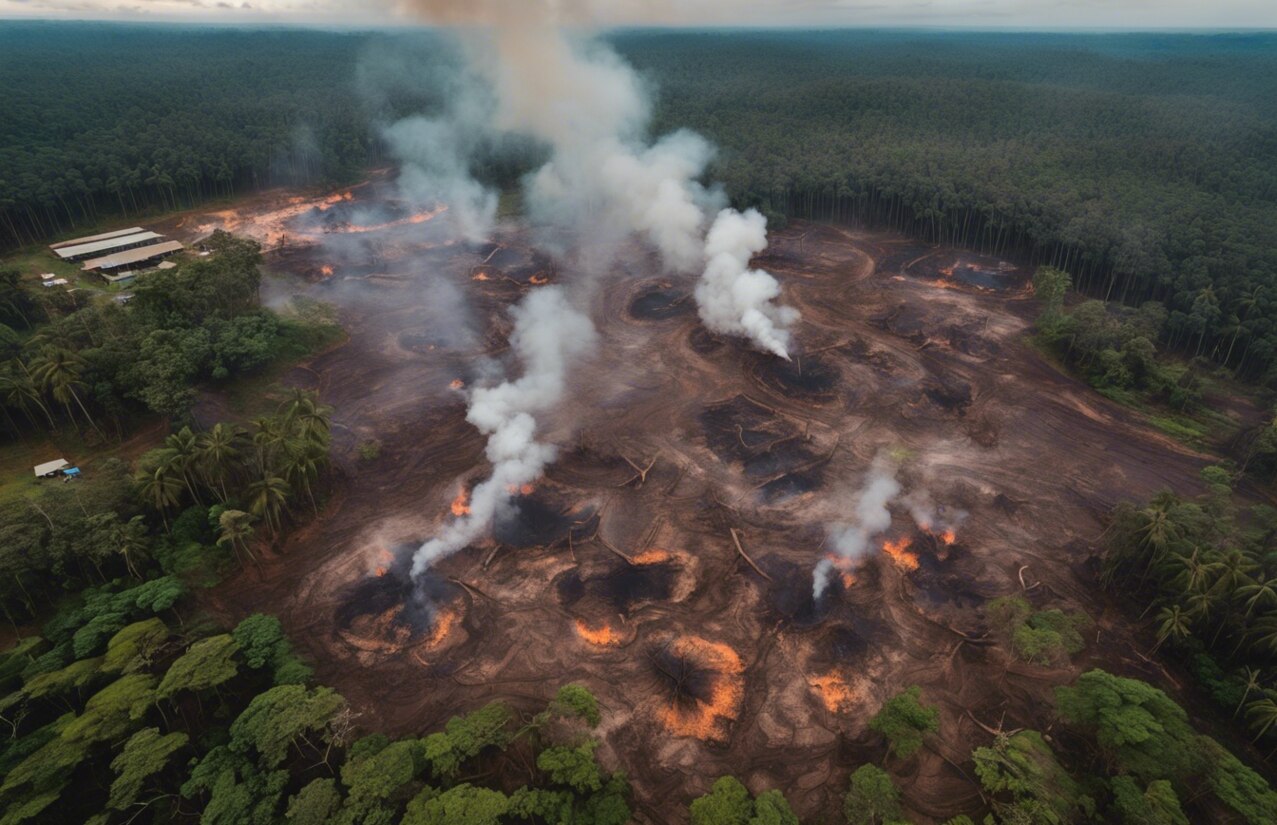
Deforestation
Conversely, deforestation is like to chopping down a whole forest without really considering what will happen next. Stated differently, it equates to removing every cookie from the jar at once without considering to save some for later. That isn't really cool is it? These kinds of activities upset entire ecosystems, affect wildlife, add to climate change, and lower biodiversity. It is the same as tearing pages out of a book without giving the story they tell any thought.
I like to see it like picking ripe fruits from a tree selectively is more like responsible lumber production; you take what you need while making sure the tree can keep growing and bear more fruit. It entails the application of environmentally friendly methods including tree planting, wise forest management, preservation of natural areas, and acknowledgment of the rights of indigenous people. This way allows you and I to meet our current needs without endangering the ability of future generations to meet their own.
My work in forestry has shown me that there are approaches to bringing about a peaceful coexistence of human activity and the natural environment. Utilising ecologically friendly logging methods like reduced-impact logging or agroforestry, it is feasible to harvest timber sustainably while maintaining the health of ecosystems. Success is found in working with nature as opposed to against it.
Should you be thinking about a career in forestry or a closely related field, think about specializing in conservation biology or sustainable forest management. The goal in this field is to find methods to preserve forests while yet meeting human demand for wood-based goods. And who will know? You might wind up developing original ideas to keep our forests safe for many years to come!
It is imperative that everyone of us remembers that we are all stewards of this amazing earth. No matter how little an action, it all adds up to save our forests. This includes things like selecting products made of recycled paper and providing support to businesses with ethical sourcing policies to ensure the new products coming into the system don't support a destructive cycle. So that future generations may enjoy the mysteries of our magnificent forests in the same way that we do now, let us work for harmony between people and environment.
Get your hiking boots on and your binoculars handy, then let's head into the wild to enjoy the beauty of our forests while also considering how we might help to preserve these places for coming generations.

I would want to discuss with you today about conservation of biodiversity and forest ecology, two topics that are dear to my heart. Though at first these words may seem a little scary, believe me when I say that knowing them is not only fascinating but also necessary for the survival of our world.
Let's for a moment imagine a lush, alive forest, one that has been there for thousands of years. Forest ecology is concerned with the maintenance of this delicate balance, one enjoyed by all living things, from the tallest trees to the smallest insects. Every piece is a component of this enormous puzzle, which fits precisely in place to form a healthy ecosystem.
What then is the need of protecting biodiversity in forests? It is, I must say, like guarding a rare treasure or a mine of precious ore, just this treausre chest is full of unusual plants, animals, and microbes that may hold the key to ground-breaking discoveries. The reason is simple, due to all of the rare species that awe with their beauty or the medicinal plants buried deep in the rainforest are a part of this complex web of life.
I really cannot emphasize this enough, but their is a massive need for us (all of us) to protect these priceless ecosystems, having spent many hours exploring forests and being in awe of their beauty. Whether it's by reforestation initiatives, sustainable logging methods, or just raising awareness of the value of biodiversity preservation, everyone of us can have an impact.
How therefore might one delve more into the fields of biodiversity conservation and forest ecology you may be asking yourself. That part is easy. Walk in nature reserves or lend a hand with neighborhood conservation initiatives to start. The posibilities are really endless, just getting out their is enough. Because of just how much you can learn simply by looking around you, exploring the natural world will astound you due to the diversity and wonder it offers.
Please recall that we, as stewards of this earth, have the responsibility to safeguard its treasures for coming generations. So go out and enjoy the beauty of nature; it will motivate you to become a champion of biodiversity and forest ecology. I promise you that you won't ever view forests the same way again once you begin exploring this fascinating world, I promise.
Let us together appreciate the enchantment of forests and strive to build a sustainable future in which humans and nature coexist peacefully. Prepared to start this thrilling adventure? Hope so, for sure!
Continue to be wild and to discover the world.

I can state with certainty that, having traveled through deep forests and marveled at the beauty of tall trees for a considerable period of time, I have seen directly how important it is to stay up to date on the latest developments in the forestry industry. As I say, a lot has changed since the days when planting trees and hoping for the best was all that was needed.
Modern forestry practices mostly depend on sustainable forest management, which is centered on achieving a balance between ecological, economic, and social aspects in forest management. This approach will meet the needs of the present generation as well as those to come while maintaining the diversity and health of forest ecosystems.
Using cutting edge monitoring technology is one of the most crucial components of sustainable forest management. Thanks to these technical developments, foresters may now gather data on water quality, biodiversity, and tree growth rates in real time. By ongoing observation of these factors, experts can decide how best to manage a certain forest area without endangering its long-term existence.
Not only have monitoring technologies developed, but the use of sophisticated modeling methods has fundamentally altered the way that forestry experts view forest management. These models can model many different situations and forecast possible results depending on different management techniques. Foresters can make better, more strategic decisions by using these models to evaluate the possible effects of their activities before they carry them out in the field.
Putting sustainable forest management techniques into practice usually calls for stakeholder and community cooperation. Modern forestry methods stress the need of local stakeholders taking part in decision-making processes since forests are not only natural resources but also significant cultural and social spaces for many communities. When creating forest management plans, this comprehensive approach that takes a variety of viewpoints into account eventually produces more successful and long-lasting results.
All things considered, sustainable forest management is a major development in the forestry industry that will guarantee our forests are productive and healthy for many years to come. Today's forestry professionals are more qualified than ever to meet the many demands of society while preserving and protecting our priceless woodlands by using cutting-edge technologies, modeling methods, and community involvement strategies.
Step Inside Technology
Drone use in forestry is an other fascinating advancement. You did really read correctly—drones! How we map forest landscapes, keep an eye on tree health, and even put out wildfires is being transformed by these high-flying devices. Talk about ushring forestry into the twenty-first century!
Continue, though! Not insignificantly, genetic engineering has influenced contemporary forestry methods. Researchers have created fresh opportunities to increase forest productivity with the least amount of environmental effect by creating specifically bred tree species that are faster to grow or more resistant to diseases.
Now, from someone who has been around the block (or should I say around the forest?) here are some advice if you're considering a career in forestry or want to progress in your present path:
- Don't be afraid to ask questions and keep up with new advancements in forestry research. You'll be better able to influence change in this always changing industry the more you know.
- Get together with other forest-loving people, join trade associations, and attend conferences. Creating a solid network can lead you to fascinating prospects you were unaware existed.
- Gaining proficiency with drone technology or GIS software will give you an advantage in the modern forestry industry.
- Get Your Hands Dirty! Spend some time in the field, become at ease identifying trees, and pick up tips from seasoned experts who are willing to impart their priceless expertise.
Here it is, then, a peek into some of the amazing study and invention that have influenced contemporary forestry methods during the past fifty years. Having great affection for our forests, I'm happy to see how far we've come and eager to see what's next. Recall that preserving our natural world for coming generations is a calling that calls for commitment, passion, and dedication. It is not just a job.
Keep sowing those change-seeds; you never know what powerful forests might sprout from them!
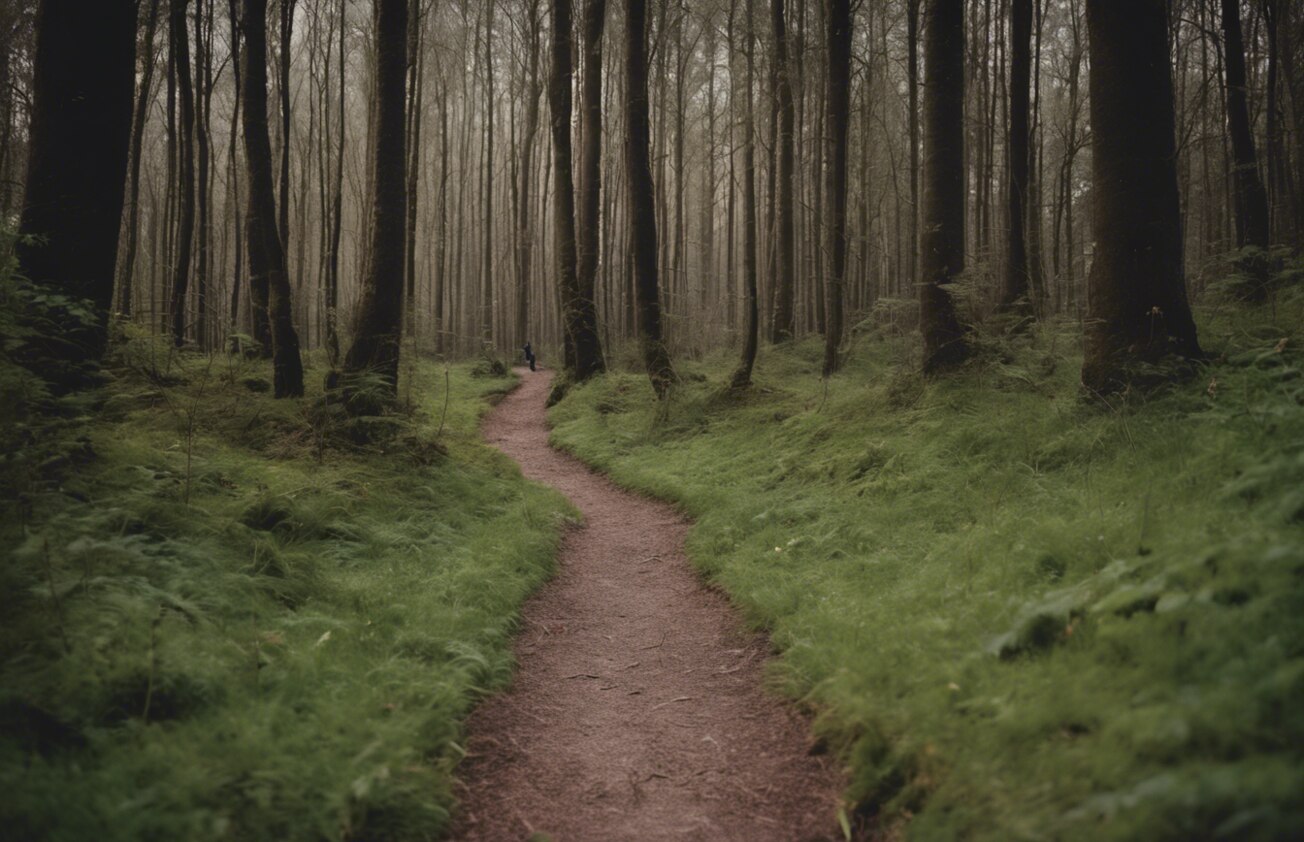
It's an amazing journey full of obstacles but so rewarding, I promise.
Having worked in forest ecology for some years now, I can attest that it is a demanding profession. Don't let that, though, turn you off! It is very satisfying to make the kind of difference that we do in protecting our environment.
I was worried when I first started out about juggling my work and my family. Long days in the field looked like there wouldn't be much time left over for spending with my loved ones. But, suprise. Making that balance work is everything.
Consider my daughter. Being in the middle of nature, she is learning about trees, plants, and animals directly. She now includes our work into her life, and it is all worthwhile to witness her interest and passion for the natural world.
Seeing how deeply my daughter connects with nature has been incredibly fulfilling for me as a parent.
There is little else so beautful than a child's curiosity.
She was raised among forests, plants, and animals and has always been enthralled with the beauty of the natural world. Beyond what she could learn from textbooks alone, this practical experience has helped her to cultivate a sincere respect for the environment.
I've seen how our efforts to save the environment have permeated her everyday existence. On short walks (she is still small mind you) through verdant forests, she enthusiastically asks me, pointing out various plant species and paying close attention to the bird songs. She is insatiably curious and probes everything she sees to find out more about the complex ecology all around her.
Observing her love of the surroundings blossom right in front of my eyes is what makes my heart sing. From little insects to enormous trees, she treats all living things with respect and compassion. Her contagious passion for conservation and sustainability encourages people around her to act and change the world.
With my daughter, every minute we spend outdoors together is an opportunity to learn and to grow closer over our love of the natural world. Working together, we are making lifelong memories and engraining in her a strong sense of obligation to protect our world for coming generations.
Observing my daughter grow up in a natural setting gives me unfathomable happiness. It serves as a timely reminder of the need of developing in our kids a deep bond with the natural world and fostering their natural curiosity and admiration for all of its beauties. I'm hoping by raising her this way, she will live a lifelong love of the environment and will fight for its preservation long after I'm gone.
In forest ecology, you will work on conservation plans, study ecosystems, and carry out research. Working hands-on calls for commitment and enthusiasm (and a lot of time). But believe me when I say that the contribution you make to protecting our natural environment is unbelievably fulfilling.
You can manage to balance work and family if you're thinking about a career in forest ecology. I am proof of that. But you will also discover ways to share your love of the outdoors with those you care about. Tell them about your experiences, include them in projects if you can, and create memories in the great outdoors.
I hadn't though it possible, I was uncertain at first when it happened. But it is feasible. So don't worry if you are apprehensive about taking that plunge into the field of forest ecology, then rest assured you can do it. Accept the difficulties, enjoy the successes, and never forget that family is always welcome along the path of protecting our environment. Both professionally and personally, we can change things together.







